How Can I Align My Spine Without A Chiropractor
Have you ever wondered how you can align your spine without relying on a chiropractor? Well, I have too, and let me tell you, there are plenty of innovative techniques out there waiting to be discovered.
In this article, I will explore various methods on how can I align my spine without a chiropractor, allowing you to take control of your own well-being. When it comes to spine alignment, proper sitting posture is key. It may seem like a simple concept, but maintaining good posture while sitting can make all the difference in the world. By consciously engaging your core muscles and keeping your back straight, you can prevent unnecessary strain on your spine and encourage proper alignment.
So whether you're working at a desk or lounging on the couch, take a moment to check in with your posture – it's an innovative way to support the health of your spine without needing a chiropractor's assistance.
Spine Alignment Techniques
Several home methods can align your spine without a chiropractor. Spinal alignment exercises work. These exercises stretch and strengthen spine-supporting muscles, improving alignment over time.
Many people do the cat-camel stretch, where they get on all fours and arch and round their back, and the child's pose, where they kneel on the floor with their arms extended in front of them and gently lower their chest. Daily practice of these exercises can gradually align your spine and improve your posture.
Proper sitting posture aligns your spine naturally. Poor spinal alignment can result from spending hours at a desk or computer, which most of us do every day.
Sit with your feet flat and your lower back slightly curled to straighten your spine. Maintaining relaxed shoulders and a slight pullback prevents slumping. To avoid neck and upper back strain, keep your computer screen at eye level. Maintaining proper sitting posture throughout the day can help align your spine without a chiropractor.
Paying attention to daily habits can help with spinal alignment, along with exercises and sitting posture. Avoiding heavy lifting or using improper lifting techniques can stress our spines and cause misalignment. Remember to bend from the knees and engage your core when lifting objects. Choose bags and backpacks with wide straps to distribute weight evenly across both shoulders instead of slinging it over one.
You can align your spine and improve your posture without a chiropractor by using these techniques daily. Remember to do spinal alignment exercises, sit properly, and avoid habits that could harm your spine.
Proper Sitting Posture
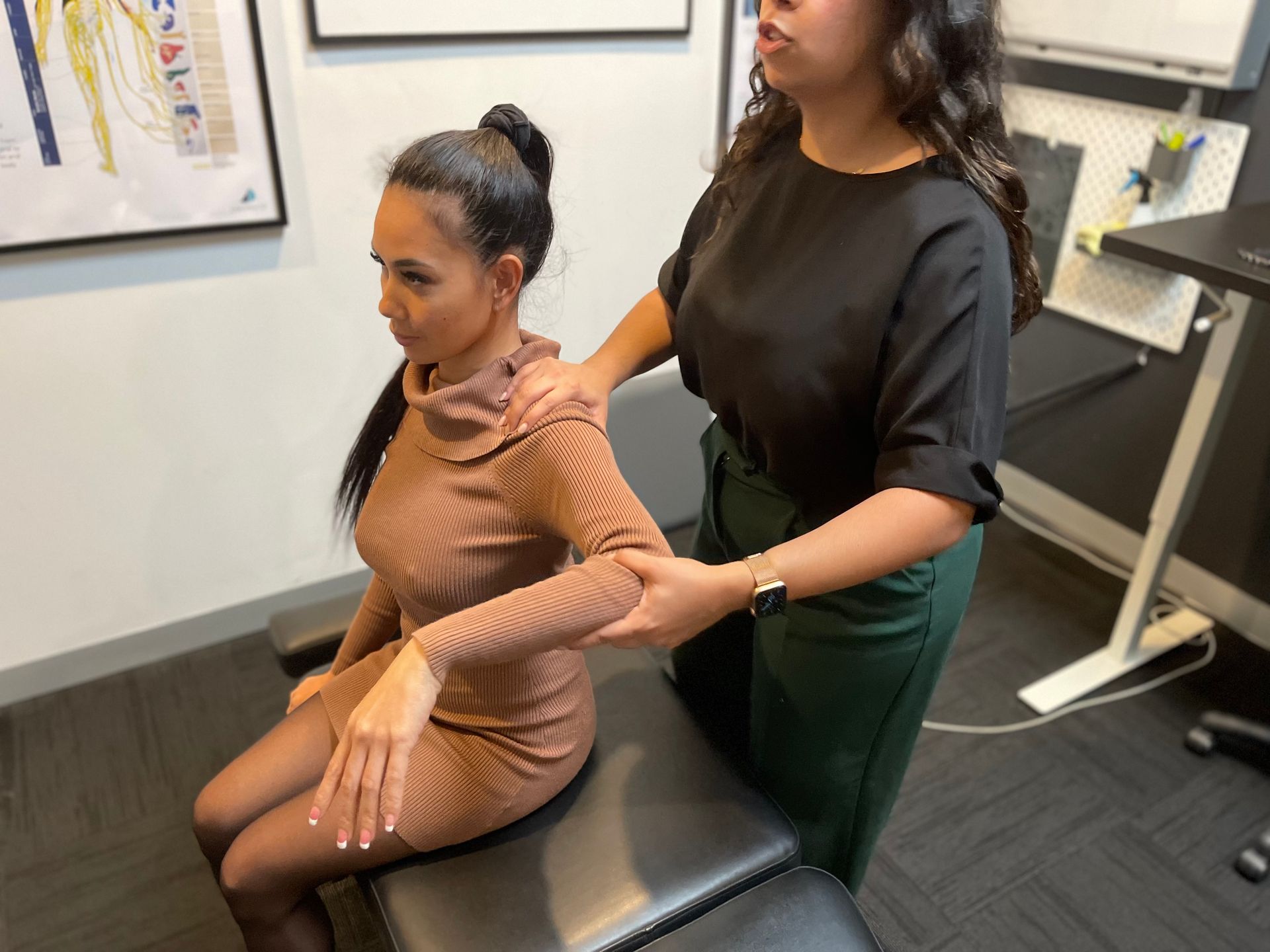
Proper sitting posture is essential for spine health. Sitting for long periods of time can strain our spines and cause back pain. Proper sitting alignment can prevent these issues and improve spine health.
Sitting with good posture requires a straight back. Avoid slouching or leaning forward. Sit tall with relaxed shoulders and a slight pullback. Imagine a string on your head gently pulling you up, aligning your spine at its natural curve.
Sitting with proper lower back support is also important. Poor posture and spine pressure can result from many chairs lacking lumbar support. Place a cushion or rolled towel behind your lower back for extra support and alignment.
Finally, sit with weight distribution in mind. Avoid crossing your legs for long periods of time, as this can upset your pelvis and strain one side. Keep both feet flat or use a footrest to distribute weight evenly through both hips. By following these sitting posture tips, you can align your spine properly and avoid back pain.
Aligning Your Back
Add these simple tips to your daily routine to straighten your back and relieve pain. Maintaining a healthy spine and good posture requires back alignment. These steps will strengthen your core and keep you in the right position all day. Use these methods to align your back:
- Engage your core: Your core muscles play a significant role in supporting your spine. By consciously activating these muscles, such as your abdominal and lower back muscles, you can help align your back properly.
- Sit up straight: When sitting, make sure to sit with a straight spine and avoid slouching or hunching over. Use a chair with good lumbar support or consider using a cushion to maintain the natural curve of your lower back.
- Stand tall: Similar to sitting, standing with proper alignment is essential for spinal health. Keep your shoulders relaxed, chin parallel to the ground, and distribute weight evenly on both feet.
- Stretch regularly: Incorporate stretching exercises into your daily routine to improve flexibility and relieve tension in your back. Focus on stretches that target the muscles surrounding the spine, such as gentle twists or cat-cow poses.
- Practice good posture habits: Be mindful of how you carry yourself throughout the day. Avoid excessive bending or twisting motions when lifting heavy objects and be conscious of maintaining proper body alignment during activities like walking or running.
By following these tips daily, you can gradually align your back and improve your posture. Good posture reduces pain and prevents spine issues.
Maintaining Good Posture
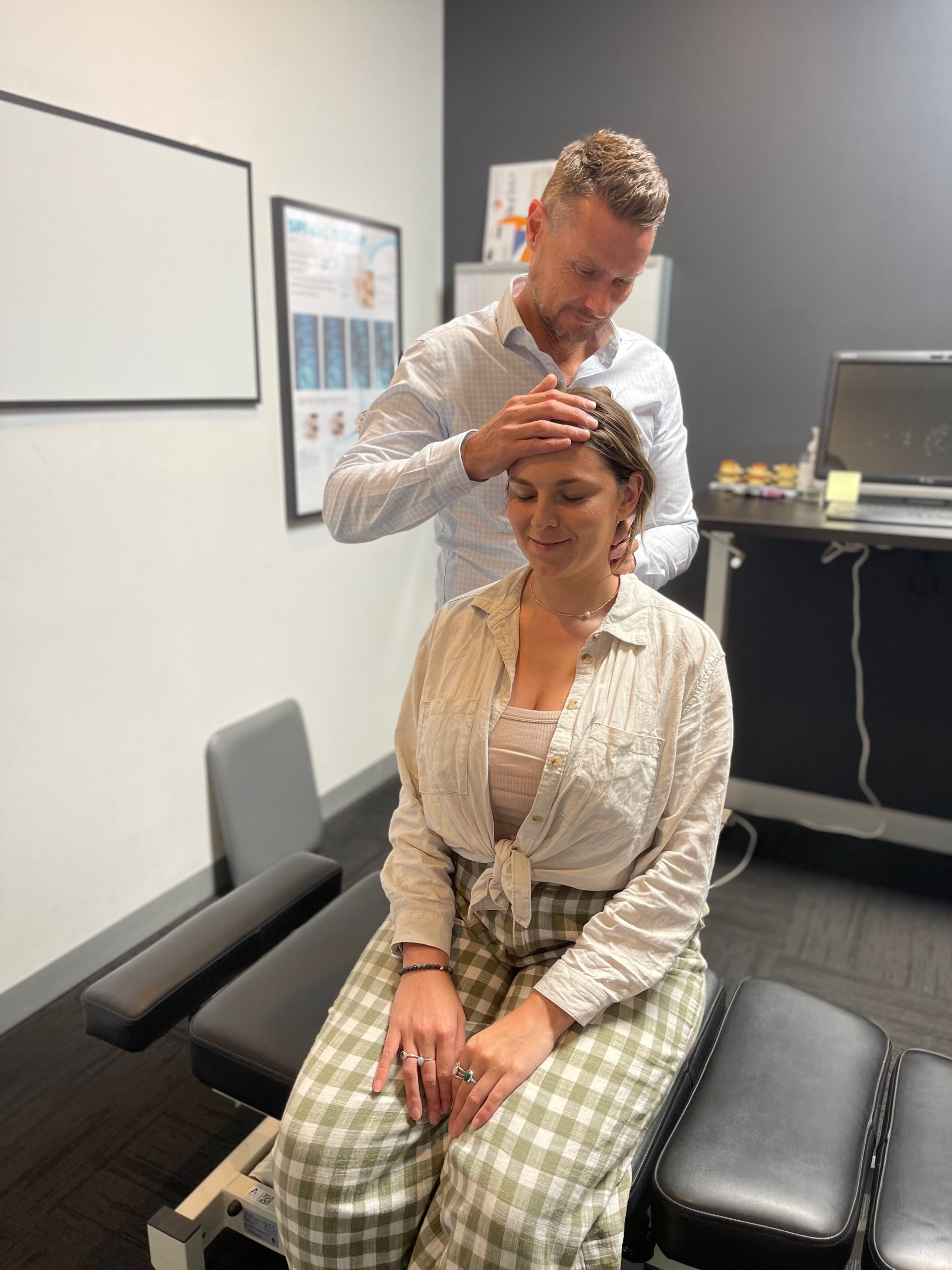
Good posture helps with spine alignment, back health, and body position during various activities, ensuring a pain-free and confident life.
Keeping your body aligned while sitting, standing, or moving is crucial to good posture.
Avoid slouching or rounding your shoulders to maintain good posture. Imagine a string pulling gently from the top of your head upwards towards the ceiling to elongate and align your spine. Engaging your core muscles can also support your back and help you stand up straight.
Planks, bridges, and bird dogs can help you maintain good posture. Start slowly and increase intensity as you build strength. Also, stretch regularly to release tension and tightness.
Maintaining good posture through body alignment and specific exercises can improve your back health and overall well-being. Better posture boosts confidence and appearance. So let's start spine care with some simple but effective steps.
Caring For Your Spine
Consider how regular exercise, proper lifting, and ergonomic adjustments in your work and home can improve spine health.
Integrating these practices into your daily routine can greatly improve spinal health and reduce spinal misalignment risk.
Three essential spine care methods:
- Exercise regularly: Engage in activities that strengthen the muscles supporting your spine. It is crucial for maintaining its alignment. Include exercises that focus on core strength, such as planks and yoga poses like the cat-cow stretch. These movements help stabilize both the cervical spine (neck) and lumbar spine (lower back), promoting overall spinal health.
- Practice proper lifting techniques: Whether you're lifting heavy objects at work or simply picking up groceries, it's important to use correct body mechanics to protect your spine. Bend at the knees instead of the waist when lifting, keep a straight back, and use leg muscles to lift rather than straining the back muscles. This reduces stress on the spine and minimizes the chances of developing a spinal misalignment.
- Make ergonomic adjustments: Evaluate your work and home environments for any potential hazards that could negatively impact your spinal health. Ensure that chairs provide adequate support for both lumbar and cervical regions by using pillows or cushions if needed.
Adjust computer monitors to eye level to maintain good posture while working long hours at a desk. These small but significant changes can make a big difference in preventing spinal misalignments.
Head And Shoulder Alignment
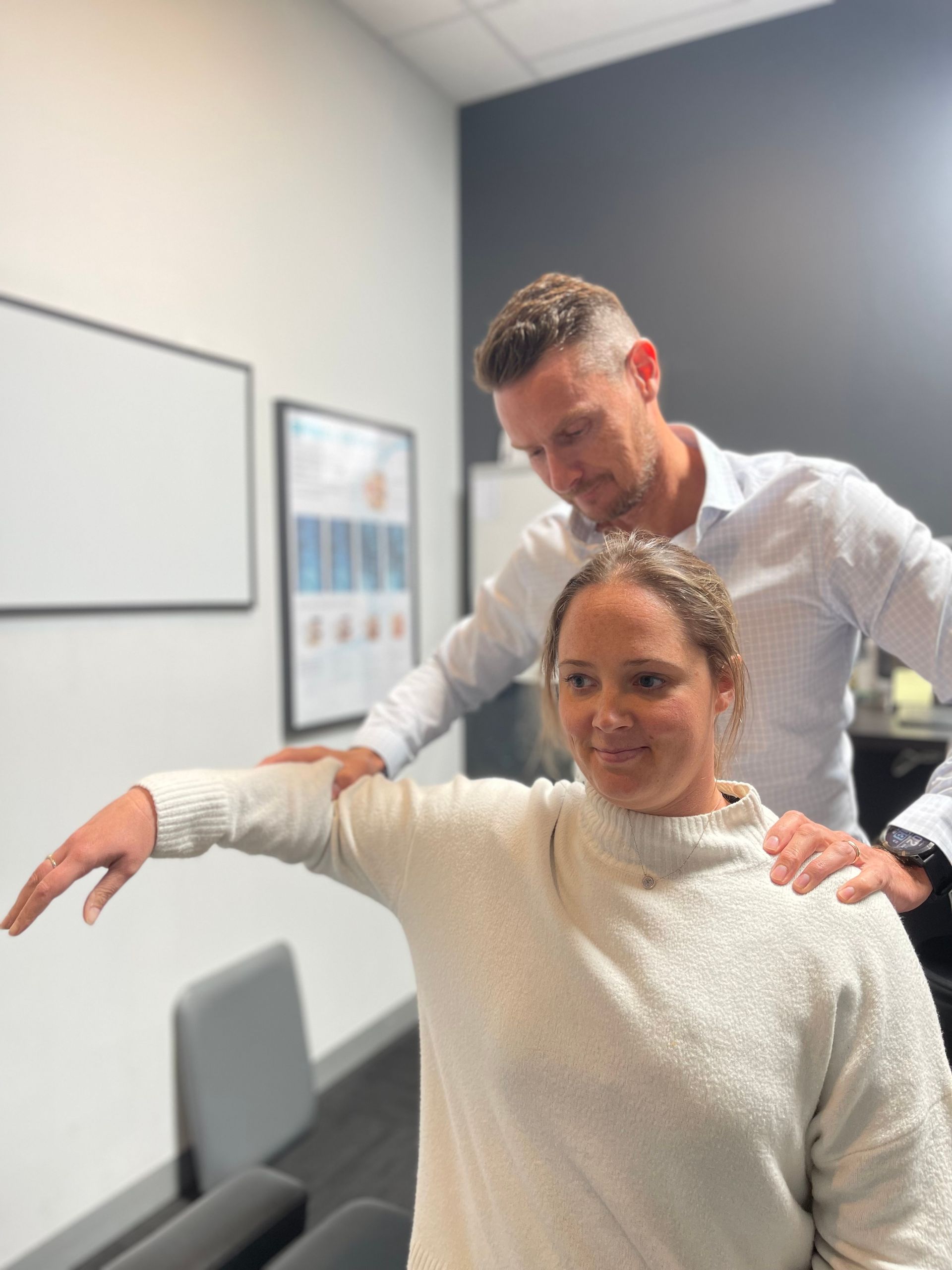
A healthy spine requires proper head and shoulder alignment to reduce strain and tension in the neck and upper back, which benefits the entire spinal column.
Improving head and shoulder alignment without a chiropractor is possible by addressing poor posture, long sitting, or injury.
Maintaining good posture throughout the day can help align your head and shoulders. Imagine a string pulling gently upward from the crown of your head, keeping your spine lengthened and straight. Avoid slouching or hunching when sitting or standing for long periods of time.
Regular stretching and strengthening exercises for the neck, upper back, and shoulders can improve flexibility and strengthen weak muscles that may be causing poor alignment.
Finally, use ergonomic tools like an adjustable chair or desk setup to promote proper alignment. Adjust your computer monitor to eye level to reduce neck strain. A supportive pillow or mattress can also help maintain spinal alignment while sleeping.
By being mindful of our posture, doing targeted exercises, and using ergonomic tools, we can improve head-shoulder alignment without a chiropractor. Remember that taking proactive steps towards spinal health now will benefit us later.
Tips For Spinal Health
These tips can help you improve your spinal health. Regular exercise, such as walking, swimming, or yoga, can strengthen the muscles supporting your spine and improve flexibility.
Specific back stretches can also help promote a healthy spine. Core-strengthening exercises like planks, bridges, and Pilates strengthen the core and help maintain proper posture.
Practice good posture throughout the day to avoid back pain and discomfort. Sit up straight with your shoulders relaxed and your ears aligned. Using ergonomic chairs or cushions that support your spine's natural curvature can also help improve posture. By exercising regularly, stretching your back, strengthening your core, and maintaining proper posture, you can align your spine without a chiropractor.
Promoting Good Posture
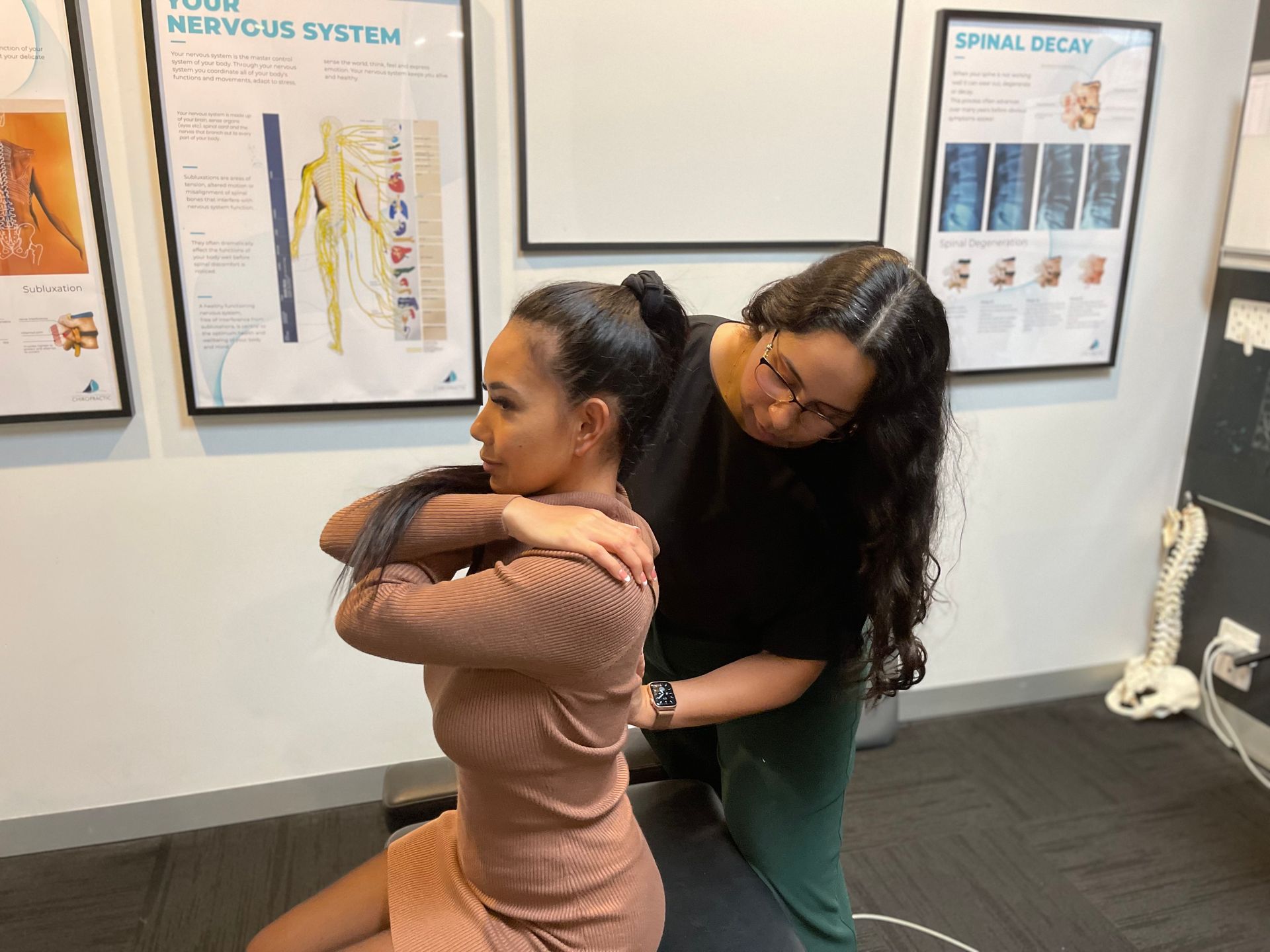
Maintaining good posture throughout the day helps align the spine and promote spinal health. How can I align my spine without a chiropractor? Here are four simple but effective posture tips:
- Sit up straight: When sitting for extended periods, such as at a desk or in front of a computer, make sure to keep your back straight and aligned against the chair. Avoid slouching or hunching forward, as this can strain your spine and lead to neck pain.
- Stand tall: Whether you're standing or walking, try to keep your shoulders back and chin parallel to the ground. Imagine a string pulling you gently upward from the top of your head, aligning your entire spine.
- Stretch regularly: Incorporate regular stretching exercises into your daily routine to improve flexibility and promote better posture. Focus on stretches that target the muscles supporting your back and neck, such as gentle neck rotations or shoulder rolls.
- Strengthen core muscles: A strong core provides stability and support for your spine, helping maintain proper alignment. Engage in activities that strengthen your abdominal muscles, such as pilates or yoga poses like plank pose.
By following these tips daily, you can gradually improve your posture and spinal alignment. It takes time and patience, but with dedication, you can reduce back pain and improve spinal health.
Improving Spinal Alignment
Sit up straight and imagine a strong tree trunk supporting your body from head to tail. Good posture, pain relief, and back muscle strength depend on spinal alignment. Many non-chiropractic methods can improve spinal alignment.
Regularly practicing core exercises like planks, bridges, and Pilates can improve spinal alignment and reduce back strain. Instead of slouching or hunching forward when sitting at a desk or standing for long periods, sit up straight with your shoulders back and relaxed and engage your abdominal muscles to support your spine in its natural curvature.
Gentle stretches like the cat-cow pose or the child's pose can elongate the spine and release tension in the surrounding muscles. Breathe deeply to relax the body and mind.
By actively improving spinal alignment through exercises, mindful posture practices, and stretching routines, you can naturally align your spine without a chiropractor's help. These methods improve posture and relieve pain by relieving pressure on certain spine areas. So embrace these techniques as part of an innovative approach to optimal spinal health without relying solely on professional intervention.
Aligning Your Spine Naturally
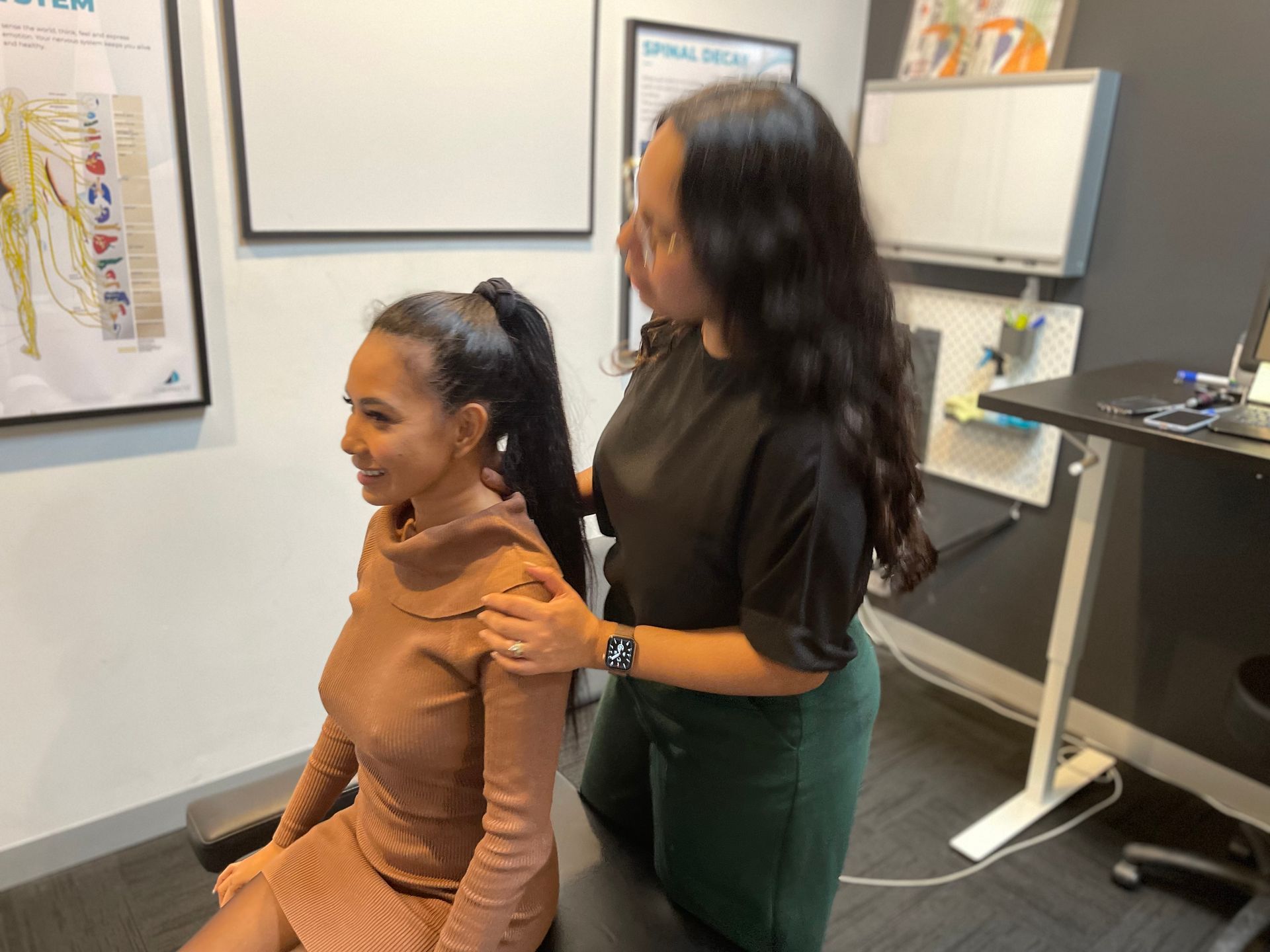
Using simple exercises and mindful practices, I can easily align my spine and avoid pain. Here are three ways to align your spine naturally:
- Stretching: Regular stretching helps improve flexibility and lengthen the muscles surrounding the spine, promoting proper alignment. Incorporating stretches like the cat-camel stretch, where you arch your back up like a cat and then lower it down like a camel, can help relieve tension in the spine. Another beneficial stretch is the child's pose, where you kneel on all fours and sit back onto your heels while reaching your arms forward. These stretches elongate the spine and release any built-up pressure.
- Core Strengthening: Building a strong core is crucial for maintaining good posture and supporting the spine. Engaging in exercises that target the abdominal muscles, such as planks or Pilates, can help develop a stable core which takes pressure off the spine. Additionally, practicing yoga poses like boat pose or bridge pose strengthens both abdominal and back muscles, providing overall support for proper spinal alignment.
- Mindful Posture Awareness: Paying attention to posture throughout the day is essential for aligning the spine naturally. Sitting or standing with an erect posture allows gravity to distribute weight evenly along the spinal column, reducing strain on individual vertebrae.
Keeping shoulders relaxed and avoiding slouching will also prevent undue stress on your back muscles.
I can naturally align my spine without a chiropractor by incorporating these simple exercises and mindful practices into my daily routine. Supporting a healthy spine also involves maintaining strength and flexibility through regular exercise and adopting ergonomic habits to reduce back muscle strain and promote optimal spinal health.
Supporting A Healthy Spine

Make good posture a daily habit to maintain a healthy spine. Sit up straight with your shoulders back, and avoid slouching or hunching.
Standing, balance your weight on both feet, and align your head and spine. Regular exercise can help support a healthy spine by strengthening back and core muscles like planks, bridges, and bird dogs. Low-impact exercises like walking or swimming can also improve spinal health by increasing flexibility and reducing inflammation. A balanced diet and regular exercise can help you maintain a healthy weight and keep your spine in alignment. Excess weight can strain the lower back and cause pain.
Finally, lift heavy objects to the knees rather than the waist to avoid spine injuries. Use your legs instead of your back muscles. If an object is too heavy to lift, ask for help.
Good posture, regular exercise, a healthy weight, and proper lifting techniques can align your back without chiropractic care. These simple but effective strategies will help keep your spine healthy and reduce the risk of misalignment or pain.
Keep these habits as part of your daily routine and prioritize spinal health to maintain spinal alignment without professional intervention.
Maintaining Spinal Alignment
Good posture helps distribute weight evenly along your spine, reducing strain on specific areas. Keeping your shoulders back, chest lifted, and chin parallel to the ground can make a big difference in promoting proper spinal alignment.
Regular exercise and physical therapy can also help maintain spinal alignment by strengthening the muscles that support your spine. Targeted exercises improve posture, stability, and flexibility. Physical therapy can help you develop a strong core and balanced musculature to support optimal spinal alignment.
Relaxation and stress reduction practices like yoga and meditation can help improve spinal alignment over time. Chronic stress often manifests physically, causing tension in the muscles surrounding the spine.
Good posture, regular exercise and physical therapy, and relaxation have helped me support my spine without chiropractic care.
Practices For A Healthy Spine
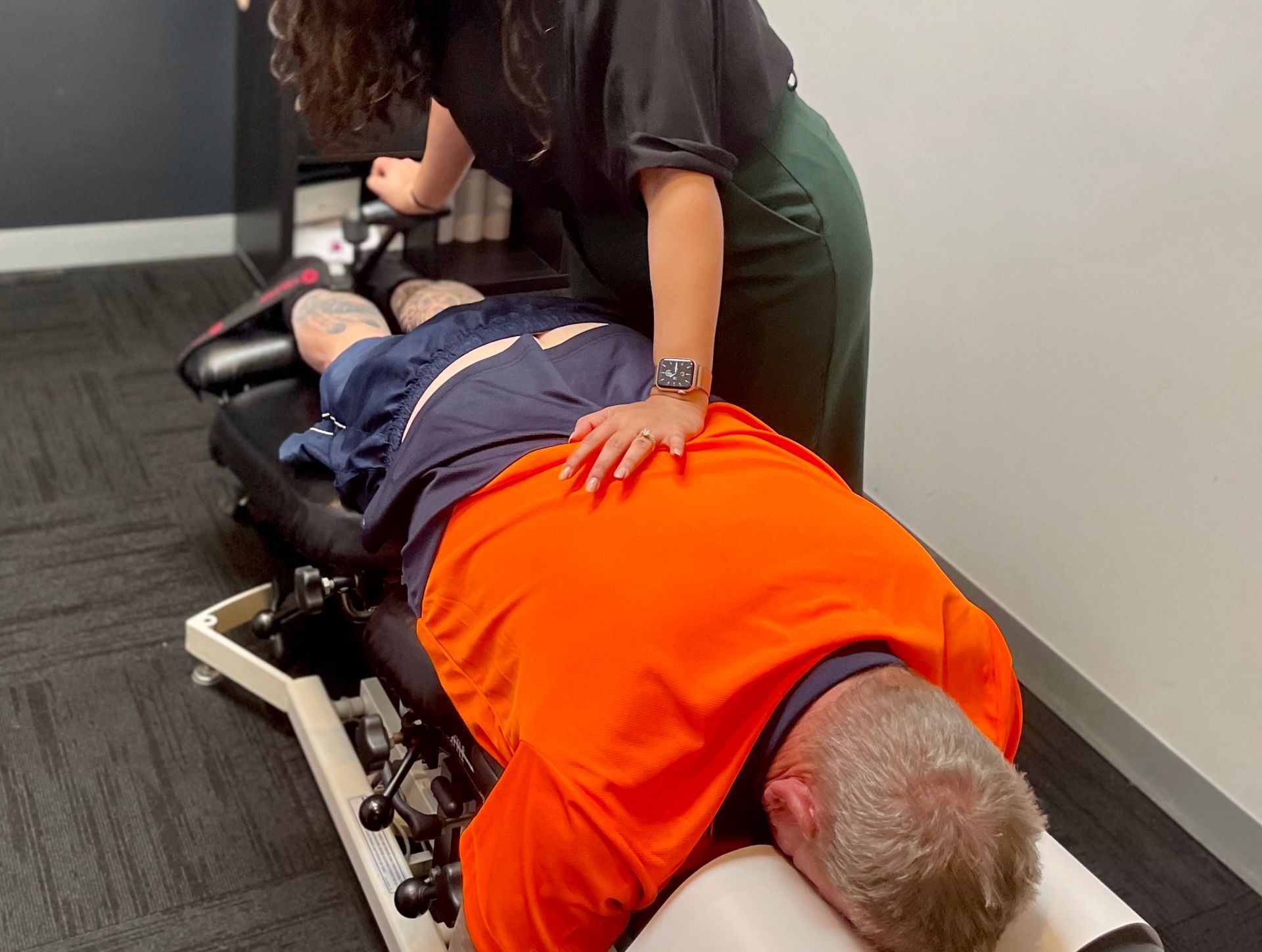
Find simple but effective ways to maintain spinal alignment, which is essential for overall health. By incorporating specific practices into your daily routine, you can relieve pain and improve spine alignment.
Yoga, which combines stretching, strengthening, and mindfulness, can help maintain a healthy spine. Poses like the cat-cow stretch, downward dog, and child's pose improve flexibility and alignment by encouraging the spine's natural curves. Incorporating these poses into your daily routine can relieve back pain and pre-disposition.
In addition to yoga, good posture throughout the day can help maintain spinal alignment. Slouching or sitting for long periods in a hunched position strains the spine and can cause misalignment. By consciously sitting up straight with your shoulders back and your chin parallel to the floor, you can support a healthier spine. It may take time to develop this habit, but consistent effort will pay off.
A strong core reduces stress on the spinal discs and reduces the risk of back problems. Pilates and weight lifting can help strengthen these muscles and improve posture.
Yoga, good posture, and core strength exercises can relieve pain and align your spine without chiropractic care. By incorporating these practices into your daily routine, you can build a strong foundation for a vibrant life. Regular chiropractic adjustments can also improve spinal alignment and health.
Final Thoughts
In conclusion, taking care of your spine and aligning it properly is crucial for maintaining good health and preventing future issues. By practicing proper sitting posture and being mindful of your back alignment throughout the day, you can greatly improve the overall health of your spine.
Additionally, incorporating exercises and stretches that strengthen the muscles supporting your spine can also contribute to a healthier alignment.
Remember to always listen to your body and make adjustments as needed. If you experience any persistent pain or discomfort, it's important to consult with a healthcare professional for further guidance.
With consistent effort and awareness, you can take charge of aligning your spine naturally and supporting its long-term health. Keep these practices in mind as you go about your daily routine, and enjoy the benefits of a healthy and aligned spine for years to come. So now you already know how can I align my spine without a chiropractor.
Frequently Asked Questions
Can I Align My Spine Without Any Professional Guidance Or Assistance?
You can align your spine without professional help. It may take some research and experimentation, but with determination, you can take control of your spinal health. By incorporating stretching, strengthening, and postural correction exercises into your daily routine, you can gradually improve spine alignment.
Pay attention to your body and start slowly, increasing the intensity and duration of your exercises over time. With patience and consistency, you can achieve a well-aligned spine and improved overall wellness.
Are There Any Risks Or Side Effects Associated With Aligning My Spine Without A Chiropractor?
Without proper training and knowledge, aligning your spine without the help of a chiropractor could cause further damage to your spine or surrounding muscles. Remember that chiropractors spend years training to safely manipulate the spine, so it's best to seek professional help for spinal alignment. Innovative technologies like spinal decompression devices or posture correction apps may improve spinal alignment under expert supervision.
Can I Achieve Long-Term Results By Aligning My Spine Without A Chiropractor?
Yes, I think I can align my spine without a chiropractor. It may take a few techniques, but with dedication and consistency, I can see results.
Yoga and Pilates can strengthen the muscles supporting the spine, helping me maintain proper alignment. Good posture and ergonomic workspace adjustments can also help. It may take time and effort, but I'm confident that these innovative methods will align my spine without a chiropractor.
What Are Some Common Mistakes People Make While Trying To Align Their Spines Without A Chiropractor?
I've learned from personal experience that people make common mistakes when aligning their spines without a chiropractor. Stretching can temporarily relieve misalignment, but it doesn't address the root causes.
Sitting or standing with poor posture strains the spine and can cause misalignment over time. Don't try self-adjustments without proper training or knowledge. Our spines are complex, so manipulating them without help can be dangerous.
Alternative therapies like yoga or Pilates, which strengthen core muscles and improve flexibility, may be safer and more effective for spinal alignment without a chiropractor.
Are There Any Alternative Methods Or Therapies That Can Help Align The Spine Without A Chiropractor?
Regular yoga practice can help align the spine without a chiropractor by stretching and strengthening the muscles that support it.
Acupuncture, which uses thin needles to stimulate energy flow and heal, is another effective method. Massage therapy can also reduce muscle tension and improve posture, aligning the spine naturally.
A strong core supports your spine and keeps it aligned, so consider adding core strength exercises to your routine. Alternative methods for spinal alignment offer novel alternatives to chiropractic.
